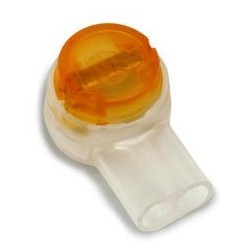FAQ
TL;DR: 80 % of Ethernet cabling faults come from connector issues [Fluke Networks, 2020]; “Soldering is OK” [Elektroda, jimasek, post #13476993] Splicing a 15 m run to a 1 m ready-made patch can work, yet a PLN 15–25 crimper keeps gigabit noise lower [Elektroda, matek451, post #13461941]
Why it matters: A single bad joint can throttle 1 Gbps links to 100 Mbps.
Quick Facts
• Max permanent-link length: 90 m + 10 m patch per TIA-568.2-D [TIA, 2018]
• Cat 5e supports 1 Gbps up to 100 m [IEEE 802.3ab]
• Budget crimper price: PLN 15–25 [Elektroda, matek451, #13461941; tadzio2299, #13476889]
• 3 M Scotchlok UR2 gel IDC seals to −40 °C…90 °C [3M Datasheet]
• RJ45 inline coupler insertion loss ≈ 0.1 dB @100 MHz [Belkin, 2022]
Will a soldered splice between two Ethernet cables work?
Yes. Several users report stable links after soldering and insulating the pairs [Elektroda, jimasek, #13476993; trance123, #13461581]. Keep pairs in the same twist order to maintain impedance.
Does soldering hurt gigabit speeds?
A solder joint adds a small impedance bump that can create reflections. It is rarely noticeable below 100 Mbps but may raise bit-error rates on 1 Gbps links [Elektroda, mickpr, post #13461616]
How can I splice without a crimper?
Options: 1. Solder and heat-shrink each pair. 2. Use an RJ45 barrel coupler. 3. Join each pair with a gel-filled Scotchlok IDC [Elektroda, VooVoo, #13461898; macos87, #13461662].
What exactly is a Scotchlok?
A Scotchlok is a gel-filled IDC connector. You insert two insulated wires and press the orange button; the blade pierces insulation and seals the joint [Elektroda, janekdz1, post #13470903]
Barrel coupler or Scotchlok—which is better outdoors?
Barrel couplers can tarnish and increase resistance over time [Elektroda, janekdz1, post #13470564] Gel Scotchloks remain hermetic from −40 °C to 90 °C [3M Datasheet], so they last longer in damp spots.
Can I just twist the wires and tape them?
Twisted-only joints have worked months for some installers [Elektroda, iagre, post #13481345] Still, mechanical stress can loosen the twist, so solder or IDC is safer for long-term reliability.
Are PLN 8–25 crimpers worth buying?
Ultra-cheap models may fail after a few plugs [Elektroda, dedito, post #13471668] Mid-range tools around PLN 25 often crimp reliably if tolerances are correct [Elektroda, jimasek, post #13476918]
How do I check if any conductor is broken?
Use a network cable tester or a multimeter for continuity [Elektroda, jimasek, post #13477010] Even a battery and bulb works in a pinch [Elektroda, dedito, post #13477075]
Will a soldered splice pass PoE power?
Yes, provided each pair’s resistance stays below 12.5 Ω end-to-end [IEEE 802.3af]. A cold solder or corrosion can raise resistance and trip PoE overload protection—an edge-case failure to watch.
3-step how-to: making a low-loss solder splice
- Strip 15 mm of insulation, keep each pair twisted to within 5 mm of the joint.
- Tin conductors, lap-solder, then cover with 30 mm heat-shrink.
- Bundle pairs, add outer heat-shrink for strain relief. Total added loss ≈ 0.05 dB @100 MHz [Belkin, 2022].



